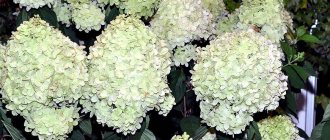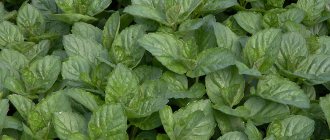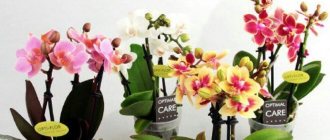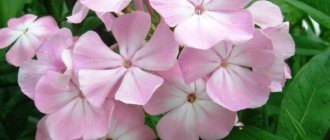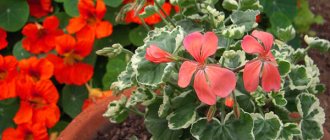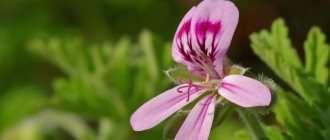Introduction
There are several leading companies in the world engaged in eustoma breeding. In the Russian Federation, mostly seeds from these producers are sold, but packaged by local companies.
Because of this, confusion often arises in the names of varieties. Therefore, we will present international names presented on the official websites of breeders. In most cases, varieties are named after a color, and this color is included in several collections.
Eustoma varieties are divided into five groups depending on the timing of flowering.
Group “0” – very early, “1” – early, “2” – middle, “3” – late, “4” – very late. Some manufacturers distinguish four groups, without the “super early” one.
Lisianthus varieties are most often bred from the species Eustoma Russellianus (Russell), formerly called Grandiflorum or Eustoma large-flowered.
White
Series "Echo" (Echo) variety "Pure White". A tall variety (60-80 cm in height) suitable for growing at home and in the garden for cutting. The first group of flowering, large double flower (5-6 cm) pure white.
“White” from the “Rosita” series (Rosita, 1, 2, 3 and 4). New big collection. A tall variety (80-100 cm) with a medium-sized double flower in the shape of a rose. An excellent variety for cutting and making bouquets.
"Ivory" (Ivory) in the line "Carmen" (Carmen). The color translated is “ivory”. A low-growing variety (15-25 cm) from the popular series of “indoor” eustomas. A simple white flower.
"Sapphire White" (Sapphire white or white sapphire). A low-growing variety for growing at home. Pot 10-20 cm, plant height 13-15 cm, simple flower. Eustoma “Sapphire white” is a real mini rose.
“White” (White), series “Rosie” (Rosie). A low-growing plant 15-25 cm high with a fully double flower. Attractive white eustoma for true connoisseurs.
Other varieties
Other popular varieties are all called “White” by default and differ in series. Therefore, we will list the series and flowering groups and if there are Russian names.
- Tall varieties are simple: “White Mermaid” (“White” from the “Mermaid” series), “Piccolo” (Piccolo, 1, 2 and 3).
- Tall terry: "Alissa" (Alice, 1), "Borealis" (Borealis, 0), "Excalibur" (Excalibur, 2 and 3), "Mariachi" (Mariachi, 2). "ABC" (ABC, 1 and 3), "Flare" (Flae, not specified). “Arena” (Arena, 2), “Corelli” (Corelli, 2), “F1 Croma” (Croma, 2 and 3), “Super Magic” (Super Magic, 2).
- Low-growing simple ones: “Silver” from the “Florida” series (Florida).
How to properly care
Eustoma involves growing in compliance with certain rules. So, in April the plant needs to be hardened off. To do this, it is taken out onto the balcony or veranda. Eustoma can be transferred to open ground only after the threat of frost has passed. The distance between flowers should be 15 cm.
The place should be moderately lit, protected from the wind. There should be no quickly heating elements nearby that could burn the leaves of the flower. The soil should be nutritious, loose, well-drained, and consist of a mixture of sand and peat. If the soil is acidic, add ash or lime, otherwise the growth of eustoma will stop.
Eustoma from seeds when grown in pots is placed in light containers that drain moisture well. It is better to take plastic pots rather than clay ones. If the varieties are tall, it is worth providing support, since the flowers are large and the thin stem is not able to support them. Watering is done only with warm water as the soil dries. During the flowering process, the amount of phosphorus and potassium fertilizers is increased, and nitrogen fertilizers are reduced. If the buds have faded, they are removed. During early flowering they can be left to produce seeds.
Eustoma, which is grown as an annual, blooms from July to September. If there is a threat of frost, and the plant is planted in a pot, it is brought into the house. For the winter it is necessary to prune, leaving only a few internodes. Storage in winter is in a pot, the temperature should reach +15 degrees. Watering in winter is rare and fertilizing is not done. After the frost has passed, the eustoma is planted again in open ground.
When growing plants in a greenhouse, cultivation occurs year-round. After the flower stalks are cut, it is necessary to prune, then flowering will occur again after 3 months.
Green
“Lime Green” (Lime green) from the “Mariachi” series. Tall variety (75-90 cm) with large (5-7 cm) extra-double flowers of light green color. Second group of flowering.
“Green” (Green) from the “Super Magic” series, we know as eustoma “Green Alley” from. A tall variety with large double flowers with a pale green tint and a medium flowering period.
"Green" (Green) from the episode "ABC 1". Tall variety (80-100 cm). Large double inflorescences of greenish color. Strong stems and high storage stability.
Other varieties
- Tall simple: "Piccolo" (Piccolo, 2 and 3).
- Tall terry varieties: “Alissa” (Alice, 2), “Rosita” (Rosita, 1, 2 and 3), “Advantage” (Advantage, 2), “Arena” (Arena, 3), “F1 Croma” , 1 and 3).
Photo of eustoma in a flowerbed: harmoniously selected neighboring flowers and interesting design
The beautiful eustoma in the garden landscape design as in the photo is a true princess or a harmonious inclusion in the existing landscape. It goes well with many tall flowers, and will also look organic in a stand-alone flower garden.
Eustoma will look good in a flower bed with peonies, petunias or carnations
At the same time, the most suitable landscape styles for it are:
- Dutch, in which everything blooms and pleases the eye. Therefore, there is a place for both tall and short flowers.
- Chinese, in which everyone is short, so short bells are perfect.
- Moorish, which is characterized only by green shades, so a lisianthus bush of a certain variety will not be out of place.
But these are not all possible styles. You can create a kind of fusion, the main thing is the desire to create on your own site and feel harmony.
You can create a luxurious carpet from eustoma by planting several dozen plants together.
In this case, the neighbors of eustoma can be:
- strict and tall gladioli, large-flowered chrysanthemums, dahlias;
- marshmallow-shaped flowers - garden roses, peonies, which will be arranged in the second tier;
- low-growing ranunculus, black-browed flowers and tulips.
To grow eustoma, you will have to work a little, but the result will exceed all expectations
In a word, the beauty eustoma is good in any union and in any area. Plant her once and you will fall in love with her forever!
Yellow
“Yellow” (Yellow), series “Echo” (Echo). Tall variety (70-90 cm) with a standard double large flower. First group of flowering. Legendary series with good reviews. Excellent option for cutting.
"Yellow" (Yellow) from the series "ABC 1 and 2". In Russia it is also sold as "Madge Yellow" from. Tall variety (80-100 cm) with large double yellow inflorescences.
"Yellow" (Yellow), series "Super Magic" (Super Magic). Tall variety (70-90 cm). Large double yellow flowers. First and second group of flowering.
Other varieties
- Tall varieties are simple: “Piccolo” (Piccolo, 2).
- Tall terry: "Alissa" (Alice, 2), "Aube" (Aube, 3), "Borealis" (Borealis, 0), "Excalibur" (Excalibur, 3), "Mariachi" (Mariachi, 2), "Rosita "(Rosita, 3 and 4), "Advantage" (Advantage, 2), "Gold" in the "Arena" series (Arena, 3), "Corelli" (Corelli, 3), "Croma" (Croma, 3).
- There is also a fairly popular Twinkie Yellow variety from, but we were unable to find information among global producers. According to the packaging: plant up to 50 cm in height with large simple yellow flowers.
Red
“Carmine” (Carmine or carmine) from the “Mariachi” series (Mariachi, 2nd flowering group). Lisianthus has extra-double large flowers (5-7 cm in diameter) of red color, very similar to a rose. An excellent variety for making bouquets. The height of the bush is 76-96 cm. According to reviews, the flowers tolerate transportation well and last a long time in a vase.
“Red” from the “F1 Arena” series (F1 Arena). Tall variety (70-90 cm) with double large flowers (6-7 cm in diameter) from dark pink to light red or cherry shade. The third group of flowering.
- Today we cannot recommend other proven modern varieties of red eustoma.
Growing eustoma at home
Many gardeners try to propagate the flower by dividing the bush. To ensure that your attempt does not end in failure, at the end of the article there are recommendations on how to properly divide the rhizome. After all, an adult plant can hardly tolerate root disturbance. Most gardeners do not take root cuttings, even when using Kornevin and creating greenhouse conditions. The most reliable, proven, although time-consuming, method of propagation is growing eustoma from seeds.
Therefore, we will consider in detail in the article how to grow a luxurious “rose of love” bush from a seed.
Pink
“Deep Rose” (Deep Rose) from the American series “Flare” (Flae, translated as flash). On sale it is referred to as “Laguna Deep Rose”, only in the photo it looks more saturated in color. Tall variety of the second flowering group. Terry pink flower.
“Pink” (Pink), series “Echo” (Echo). Tall variety (70-90 cm) of the first flowering group from the famous series. Standard double flower. One of the most popular pink eustomas for growing as cut flowers.
"Misty Pink Mariachi" Tall collection (up to 100 cm) “Mariachi” with an extra-double flower reminiscent of a camellia. Light pink eustoma is perfect for making bouquets. Second group of flowering.
"Deep Rose" from the ABC 1 episode. We sell the variety under the name “Maidge Deep Rose”. Tall variety for cutting, 80-100 cm high, with double flowers of light pink color.
"Rose" in the collection "Carmen" (Carmen). Low-growing indoor eustoma (15-25 cm) pink. Simple flower. High-quality root system. Resistant to fusarium.
“Pink” (Pink), series “Florida” (Florida). A low-growing variety (20-25 cm), which can be grown in open ground, a greenhouse and at home (a pot of at least 12 cm in diameter). A popular series with the most resistant varieties to summer heat in the garden. Light pink color.
“Pink” (Pink) from the series “Rosie” (Rosie). A low-growing plant (15-25 cm) with a strong root system, which is suitable for growing as a houseplant. Fully double flower of delicate pink color.
Other varieties
- Tall varieties are simple: “Rose Pink” (Rose pink, 2 and 3) series “Piccolo” (Piccolo).
- Tall terry: "ABC" (ABC, 2 and 3), "Alissa" (Alice, 1 "Rose" and 2 "Pink"), "Arena" (Arena, 1, 2, 3 and 4), "Cocktail Champagne" (Champagne cocktail) in the “Aube” series (Aube, 3), “Borealis” (Borealis, 0), “Corelli” (Corelli, 3), “Rose Pink” in the “Excalibur” series (Excalibur, 2 ), “Mariachi” (Mariachi, 2), “Clear Pink” (Klia pink) series “Robella” (Robella). Series "Rosita" (Rosita): "Rose Pink" (Rose pink, 1, 2 and 4), "Pink" (Pink, 2 and 3) and "Pink Flash" (Pink Flash, 3), "Super Magic" ( Super Magic, 2).
- Light pink lisianthus "Champagne" (Champagne) in the collection "Echo" (Echo), "Misty Pink" (Misty pink) from "Mariachi" (Mariachi, 2) and "Rosita" (Rosita, 2), "Rose" ( Rose) from "ABC" (ABC, 2), "Corelli" (Corelli, 2 and 3).
Eustoma care
Despite all the decorativeness of eustoma, it is not too capricious to care for. Even an inexperienced gardener can cope with planting and growing on his own. The main requirements are stable, but not excessive humidity, and temperature changes.
Temperature
The ideal everyday temperature for blooming eustoma is 20-25 degrees. At night the thermometer drops to 15 degrees. To ensure at least a minimal difference in the apartment, move the flowerpot close to the window glass.
Photo: domashniecvety.ru
Lighting
Eustoma needs a lot of light, but strictly diffused. Therefore, shade the flower from direct scorching rays, otherwise burns will appear on it. To grow a healthy eustoma on a windowsill, choose the western or eastern side.
Photo: flower care.rf
Watering
Although eustoma copes with heat and temporary drought, it prefers regular watering. In a flowerpot on the windowsill, the soil is not as nutritious and moist as in the garden, so do not allow it to dry out completely. Water the pot as soon as the top layer has dried thoroughly. It is very important not to soak the stem, petals and leaves, otherwise this can lead to fungus.
Photo: m.nn.ru
The soil
You will need loose and well-ventilated garden soil mixed with peat and sand. This way the root system develops better and faster, and the flower grows. At first, regularly moisten the soil with a spray bottle so that it is always slightly wet.
Photo: sveklon.ru
Fertilizers and fertilizing
Like all lushly flowering plants, eustoma needs regular feeding. But there is also a plus: you don’t have to reinvent the wheel, because a simple complex fertilizer is enough. Apply it two weeks after planting and feed the flower twice a month. During the period of active flowering, you can do this a little more often.
Photo: zen.yandex.ru
Transfer
Eustoma is very rarely transplanted because it has a fragile root system. If you damage the earthen ball, the plant will not take root in the new place and will die. If transplantation cannot be avoided, proceed as carefully as possible using the transshipment method.
Photo: 7dach.ru
Reproduction
Eustoma is a rare garden flower that most often has to be grown from seeds. It is almost impossible to divide it so that the bushes take root, and the roots do not form cuttings suitable for seedlings.
Collecting your own seeds will be quite problematic, but you can use purchased ones. They are small, so they are sold in the form of pressed granules, which increases germination. Plant the seeds in January-March in moist, loose soil, cover with film and leave in a bright, warm place.
Photo: centr-sadovoda.ru
Seeds develop faster if they receive at least 12 hours of light, so phytolamps may be needed in winter. Try to ensure a temperature difference from 20-25 daytime to 14-17 night degrees. You will be able to plant the first shoots and transfer them to normal daily care in two weeks.
After another month and a half, with the formation of several pairs of full-fledged leaves, the sprouts can be planted in small pots. To ensure they branch well, pinch off the tops after another couple of weeks. After about three months, the eustoma can be carefully transplanted to a permanent place along with an earthen ball at intervals of about 15 cm.
Photo: rassada.club
Wintering
If you want to leave the garden eustoma for the second year, you will have to dig it up for the winter. Carefully transplant the flowers into boxes with a lump of earth, trying not to damage it. Trim off all the leaves and shoots, leaving only a couple of internodes. Move the flowerpots to a cool, dark place with a temperature of up to 14 degrees and reduce watering to a minimum.
Photo: 2sotki.ru
Pest and disease control
Regularly treat eustoma with fungicides for prevention. It is very sensitive to excess moisture and is susceptible to fungal diseases. After prolonged rains, use stronger preparations to prevent gray rot.
The most common pests are whiteflies and aphids, against which conventional insecticides help. They love eustoma and slugs, but they will have to be gotten rid of mechanically.
Photo: oir.mobi
Tree hydrangea: varieties, care features (60 photos)
Apricot (Apricot) and Champagne
Among the varieties of lisianthus there is a separate color called “Apricot” (Epricot or simply apricot), which is translated as “apricot”, as well as “Champagne” (Champagne). Varieties with these color names are found among many manufacturers. They are also described as coral or salmon in color.
"Apricot" in the "Corelli F1" line (Corelli F1). Also a tall variety (70-90 cm) with large double flowers of salmon-apricot color. The third group of flowering.
"Light Apricot" (Light Apricot) in the series "Alissa 2" (Alissa or simply Alice). An excellent tall variety (80-90 cm) for growing at home and for cutting. Large double flowers of a delicate coral shade with fringed petals.
"Light Apricot" (Light Apricot) from the collection "Falda F1" (Falda). Tall variety (70-90 cm) with simple medium-sized flowers of light salmon color. Second group of flowering.
"Champagne Arena" (Champagne "Arena"). Tall variety (80-10 cm). Popular series. Large double flower of high quality. Resistant during transportation. The third group of flowering.
“Champagne Echo” (Champagne in the “Echo” series). Tall variety with large standard double flowers. Suitable for cutting. First group of flowering. Eustoma “Echo Champagne f1” is the most popular among varieties of this color.
"Champagne Alissa" (Champagne "Alissa"). The tall variety (80-90 cm) of eustoma is distinguished by large double flowers with dense petals. Amazing color. Second group of flowering.
"Champagne Super Magic" (Champagne "Super Magic"). The plant is 70-90 cm in height with strong stems. Double flower of unusual color, medium size. Second group of flowering.
Blue and blue
Among the varieties of eustoma it is difficult to find a blue or blue color in our understanding. By the name “Blue”, manufacturers mean lilac, lavender or dark purple color. We did find several varieties of lisianthus close to the blue and blue colors.
"Blue Flash" (Blue flash or blue flash) in the series "Robella" (Robella). A tall plant (80-100 cm) with a large double flower. Second group of flowering. An excellent option for growing at home and for cutting.
“Milka” (Milka), series “Piccolo” (Piccolo). A fairly new variety that has already settled in the hearts of many gardeners. Eustoma "Milka Piccolo" 80-100 cm in height. A simple flower of medium size. Second group of flowering. Delicate blue color of the petals.
“Blue” (Blue) in the series “Rosita” (Rosita, 3rd and 4th group). A new series with a medium-sized double flower resembling a rose. Eustoma "Rosita Blue" grows about 80-100 cm in height. The color of the inflorescence is very close to blue.
"Blue" (Blue) in the series "Corelli" (Corelli). Tall variety. Large double flower almost blue. Excellent for making bouquets. Lasts a long time in a vase. The third group of flowering.
Purple eustoma
We will separately consider the well-known varieties with the “Blue” color according to the manufacturers. And let's try to decide together what color they are? We believe that these varieties are much closer in color to purple than to blue.
Let’s start right away from the legendary “Echo” series and the “Blue” variety, or in simple terms – “Echo blue or blue f1”. Tall eustoma (60-80 cm in summer) with a double flower (4-6 cm) of blue-violet color. First group of flowering.
“Deep Blue” (Deep Blue), series “Flare” (Flae, translated as flash). It can be found on sale under the name “Laguna Deep Blue” from Tall lisianthus with a voluminous double flower of violet-blue color.
"Blue" in the "Mariachi" collection. Tall series (80-100 cm). Large extra double flower (5-7 cm) with pure purple color. Second group of flowering.
"Deep Blue" from the "Super Magic" series. Lisianthus grows 70-90 cm in height. Terry large flower of rich purple color with a dark blue core. Second group of flowering.
"Blue" (Blue) in the series "Florida" (Florida). A popular low-growing variety for growing in pots. A simple purple flower.
"Blue" from the "Mermaid" series. Our variety is also known as “The Little Blue Mermaid” from. Compact bush (13-17 cm) with a simple three-dimensional flower (5-6 cm).
"Sapphire Blue" (Blue or light blue sapphire). A popular series of low-growing varieties with simple inflorescences. It is popularly called a dwarf rose or mini-rose because the bush is only 13-15 cm high. Rich purple color.
"Blue Carmen" (Blue Carmen). Low-growing variety (15-25 cm). A simple flower of medium size.
"Lavender Blue" (Lavender Blue or blue lavender) from "Rosie" (Rosie). A low-growing variety with double flowers from dark blue to light purple.
“Lilac” (Lilac, translated lilac) in the series “Carmen” (Carmen). A low-growing variety (15-25 cm) with simple, medium-sized lilac flowers. Excellent bushiness. We sell it as “Carmen Lilac F1” from “Plasma”.
Other varieties of eustoma
"Aurora" begins to bloom earlier than other varieties of eustoma. Flowers grow up to 90–120 cm. The buds are large, double, and have several colors: blue, white, pink and light blue.
“Flamenco” is a variety series, the representatives of which reach an average height of 90–120 cm. Large inflorescences have a mix of colors depending on the variety, and also have a delicate aroma. The varieties are distinguished by their unpretentiousness and early flowering.
"White Kyoto" stands out for its large white flowers and pleasant aroma. The variety grows easily and quickly.
"Cinderella" is an annual plant with double buds. The bush has strong, branched stems reaching 50 cm. For growth, the variety prefers fertile soil and a well-lit area.
“Terry” has funnel-shaped lush flowers, 7–8 cm in diameter. They are pink, purple, lilac and white, and can also have two-color inflorescences. The stems grow up to 80–90 cm, begin to branch from the middle of the shoot, because of this the branches look like lush bouquets.
"Mariachi" is an annual flower that grows up to 80–100 cm. The stems are strong, with rather large lush inflorescences. In appearance, the eustoma bud is very similar to a rose. When cut, the flower does not lose its decorative appearance for a long time. Prefers areas with good lighting and moisture permeability of the soil.
"Mariachi Lime" has a beautiful yellowish-green coloring of the inflorescences.
'Twinkie' has beautiful purple buds with satiny petals arranged in a spiral. Branched shoots grow up to 50 cm. The plant is suitable for sunny areas with light fertile soil.
“White” stands out with very large white inflorescences. This eustoma is extremely often used when composing wedding bouquets and decorating halls.
- “Blue Haze” reaches a height of up to 1 m. The buds have wavy petals of a light lilac-blue tone. The inflorescences are distinguished by their splendor and terry structure.
- "Arena Red" combines the classics of a scarlet rose and the airiness of a field poppy. Bright red or cherry buds are terry, with a yellow-black center. They are located on erect, tall stems, up to 1 m. The flowering of the variety is quite long.
- Arena Pure White is distinguished by large snow-white inflorescences with double petals.
- Arena Blue Flash has two-color petals: rich and pale shades of lilac. The buds are very large - 7–8 cm in diameter. Grown mainly for cutting.
"Rosita white" is a tall bush, approximately 80–100 cm in height. The terry buds are medium in size and very similar in shape to a rose.
Heidi grows up to 90 cm. The variety is characterized by abundant flowering, the flowers have a simple shape. This variety is characterized by 15 color options.
- Fringe mint green stands out for its unusually beautiful petal colors. They are a soft mint green color.
- Beppin-San is distinguished by unusual petals that have heavily cut edges. They are shaped like feathers. The color of the buds is light pink.
- “Picolo Northern Lights” grows up to 80–100 cm, the stems are strong, but the bush looks very elegant. The inflorescences have a simple shape, petals of a delicate lime tone with a purple border around the edges. The plant prefers well-lit areas for planting.
- Corelli is distinguished by very large double flowers, the petals of which are figured, with graceful fringe along the edges. There are 6 color options. The height of the bush is 80–100 cm.
- Robella reaches a height of 80–100 cm. The buds are quite large. It has several varieties that differ in the color of the inflorescences: Blue Flash, Pure White, Clear Pink.
Tall
Tall varieties of eustoma look great in any flower garden and serve as an extremely elegant decoration for the site.
- "Alice" is distinguished by large double inflorescences that abundantly decorate the strong stems of the bush. The height of the plant is about 80 cm. Flowers are often grown as cut flowers, since they retain their fresh appearance for a long time and are easy to transport. The variety is characterized by a rich color palette, a pleasant aroma, and has several varieties: “Alice blue” with blue buds, “Alice white” with snow-white flowers, “Alice champagne” with a slight yellowish tint of petals, “Alice pink” with a pink color, “Eupricot” with a peach tone, “Green” with a greenish tint of inflorescences.
- “Echo” is one of the most popular variety series; flowers are often grown for cut flowers. The plant grows up to 70 cm in length, the flower petals are arranged in a spiral. The buds can be either single-colored or with a smooth transition of shades, and are distinguished by early flowering. The series has 11 varieties, which have different colors and flower sizes. The most popular: “Echo Yellow”, “Echo Champagne F1”.
- “Echo Pikoti pink F1” has a very beautiful decorative appearance. The erect stems (about 70 cm) are decorated with a large number of white buds with a soft pink border. The inflorescences have a terry structure. The petals are quite dense, silky, forming a funnel-shaped cup. Flowering is quite prolific and occurs in mid-summer.
- “Echo lavender” also has large double-type inflorescences with an elegant lavender color. It has a long flowering period.
- “Super Magic” is a variety series of eustoma with large double flowers. The height of the bush is 70–90 cm. Among the popular ones: Apricot, Capri Blue Picotee, Champagne, Deep Blue, Green, Light Green, Lilac, Pure white, Rose, Yellow.
- "Magic Capri Blue Picoti F1" belongs to the tall varieties bred by Japanese breeders. Snow-white petals are decorated with a bright purple border. The buds are very double, multi-layered, reaching 7 cm in diameter. The stems of the bush are strong, growing up to 70 cm. The variety has a highly decorative appearance and is often used for planting in flower beds, ridges and as a decoration for borders.
- “Magic Green Alley F1” is distinguished by long-term flowering, super-double inflorescences reach 6–8 cm in diameter, their color is white with a slight green tint, unopened buds have a greener tone. The bush grows up to 70–80 cm, grows well in partial shade. The variety is ideal for cutting as it retains its fresh appearance for a long time.
- "Bolero" is distinguished by large, lush inflorescences. It has several varieties: Bolero Blue Picotee, Bolero White, Bolero Blue Blush.
- "Excalibur Blue Picoti" grows above 70 cm. The buds are lush and quite large in size. During flowering, the bush is densely decorated with white inflorescences with an elegant blue-violet border.
- "Excalibur hot lips" is distinguished by large snow-white flowers with a beautiful red border along the edges of the petals.
- Croma has super-double petals, which gives the inflorescences additional volume. The buds are medium-sized, formed on well-branched shoots. The height of the bush is 80–100 cm. The color and growth depend on the variety, and the variety series has several of them. Single-color: Green 1 and 2, Lavander 4, Lavander Improve 4, Silky White#, White 3, Yellow 3, two-color: Blue Picotee 3, Pink Picotee 3.
- ABC F1 is a large-flowered variety with double petals. The color of the buds (5–6 cm) is varied: pink, purple, blue, white. It blooms profusely and for a long time, the stems grow up to 100–110 cm. Loves sunny areas and regular watering. Varieties are grown for cutting; the flowers retain their fresh appearance for a long time and are easy to transport.
- "ABC 1 Green" stands out for its unusual large terry buds of a light green tone. The stems are durable and can easily withstand even strong gusts of wind. The bush reaches a height of 80–100 cm.
- "ABC 2 F1 Pink Mist" has large double buds of a soft pink tone. Flowering is mid-early, the inflorescences are 5–6 cm in diameter. The height of the bush is approximately 90–110 cm.
- Aube has very beautiful lush buds with thick petals. Strong stems reach 80 cm in height. The series consists of several varieties, which can be either plain (Cocktail Champagne, Pink Picotee) or with contrasting edging (Blue Picotee).
- "Laguna Deep Rose" is distinguished by double pink inflorescences.
- "Major Deep Rose" grows up to 80–100 cm. The buds are double, light pink.
short
Low varieties of eustoma are ideal for cultivation as a houseplant.
- Little Bell grows up to 15 cm. The bush has simple funnel-shaped buds, their colors can be different.
- “Sapphire White” is also a dwarf variety; the bush grows up to 15 cm in height. The plant has a compact size with well-branched stems. The buds are medium, snow-white in color.
- “Sapphire Pink Haze” is a squat bush (10–15 cm) with leaf blades covered with a bluish coating. Large buds are funnel-shaped, the color of the petals is white, with a wide pink border. Sunny places are more suitable for growth.
- "Florida F1 Silver" grows up to 20–25 cm. It is distinguished by lush and long-lasting flowering. The buds have satiny white petals with a dark center. Mostly planted as a potted crop.
Florida Pink is a variety with fairly branched shoots, on which large double buds of pink or beige-pink are formed. The plant is a perennial.
“Fidelity” is a low flower (up to 20 cm) with simple white buds. The flowers are numerous but small.
- Mermeid, or "Little Mermaid" , grows up to a maximum of 15 cm. The bushes are quite branched and lush. The variety has several varieties that differ in the color of the buds: white, blue, pink.
- “Riddle” reaches only 20 cm in height and has compact parameters. Eustoma buds are very similar to a light blue rose with delicate, satiny petals. The plant is very sun-loving.
“Carmen” is distinguished by a rather long flowering period, during which the bush is covered with medium-sized inflorescences, the color depends on the variety. The flower has very high resistance to diseases. The height of the bush is 20–25 cm; for growth, semi-shaded areas protected from drafts are preferable.
“Carmen blue F1” with dark blue buds with a diameter of 4–6 cm. The bush itself grows on average up to 20 cm. The variety is classified as an annual.
Ivory Carmen belongs to the squat varieties and grows to only 15–25 cm. It is often planted as a houseplant. The inflorescence is simple, white in color with a faint cream tint.
“Carmen white-blue” - medium-sized white buds decorated with a blue border.
"Carmen Lila" stands out for the delicate lilac color of its petals.
“Matador” - the variety series is distinguished by large double inflorescences of pink, blue or white color, depending on the variety. The height of the bush is 10–15 cm, the leaf blades have a light bluish coating. The plant needs sunlight and abundant watering, as well as spraying.
Light purple (lavender)
"Lavender" in the series "Mariachi" (Mariachi). A similar variety to the previous one, only with an extra-double light purple flower 5-7 cm in diameter and a second flowering group.
“Lavender” (Lavender) in the “Rosita” collection (Rosita, group 3). Huge new series in the 2022 catalogue. Tall variety (80-100 cm) with a medium-sized double flower. The inflorescence is shaped like a rose. Soft blue color.
"Lavender" in the Japanese line "Echo" (Echo) or the popular name "Echo Lavender". Tall plant (60-80 cm in height). Ideal variety for cutting. Early flowering - 22-24 weeks, first group. Large double flower (4-6 cm).
"Lavender" in the American series "ABC 2" (ABC, 2). Tall variety (80-100 cm). Large double flower. Light lilac color of dense petals. Lasts a long time in a vase.
Brown and burgundy
In addition to popular colors of inflorescences, such as white, pink or purple, there are varieties of eustoma with a rather amazing palette of colors. We have selected several unusual varieties for you.
"Deep Brown" in the episode "Rosanne 2". A tall variety with a standard double flower, but of rare color. The color is translated as "dark brown", but it is described as lavender brown.
"Brown" in the series "Rosanne1". This variety is from the same series, only with the first group of flowering. It is difficult to describe the color palette of the inflorescence in one word. You can say lemon color, turning into a light brown shade with lilac notes or close to burgundy color.
"Pikoti" or two-color
Picotee refers to a special pattern in which the edges of the petals are painted a different color than the rest. Varieties called “picoti” are produced by many seed manufacturers, and they are often included in various series.
Varieties with a border of different colors and a white center are loved by gardeners around the world. However, the manufacturer warns that the variety may lose its colored edges and become a solid color depending on growing conditions.
White and pink “Pikoti”
"Pink Picotee lmp." (Pink Picoti lmp. in the “Echo” series (Echo, 1). A tall variety with a large double flower of white and pink color. A new variety in the famous “Echo” collection.
“Pink Picotee” (Pink Picotee) from the “Croma” series. Tall collection (80-100 cm). A pink flower with a white edge, very similar to a rose. The third group of flowering.
“Pink Rim” (Pink Rim) from the “Piccolo” collection (Piccolo, 1 and 3). Tall bush (80-100 cm) with a simple flower. In our country, the eustoma of this variety is often called “Piccolo Pikoti crimson”.
"Misty Pink" (Misty Pink), episode "ABC 2". Tall lisianthus with medium-sized double flower. Delicate pink color with white closer to the base of the inflorescence.
"Sapphire" (Sapphire). Dwarf variety measuring 13-15 cm in height. A simple flower with a delicate pink color. Excellent white and pink eustoma “Sapphire Pink Rome” is perfect for growing indoors.
“Rose Picotee” (Rose Picotee), series “Rosie” (Rosie). Low-growing variety 15-25 cm in height. A fully double flower is white with pink droplets on the edges of the petals.
Other varieties
- Tall simple varieties: “Hot Lips” (Hot Lips) in the “Piccolo” series (Piccolo, 2).
- Tall terry varieties "Pink Picotee" (Pink Picotee) of white and pink color in the collections "Aube" (Aube, 3), "Mariachi" (Mariachi, 2) and "Rosita 1". And also “Rose Rim” from ABC 1, Hot Lips from Rosita 2 and Excalibur.
- “Pink Rim” (Pink Rim or “Pink Haze” from the American series y) from the series
Features of eustoma
The powerful stems of eustoma reach a height of about 100 cm, but they look very elegant. The branching of the stem begins from the middle, therefore, by cutting off one branch, you will have in your hands a real bouquet of up to 35 buds, the opening of which occurs one by one. Matte gray or pale gray leaf blades, as if made of wax, have a lanceolate-oval shape. The flower's calyx is deep and large, funnel-shaped. Single or double flowers reach from 50 to 80 mm in diameter; they are colored lilac, violet, pink or white. In this case, the flowers can be plain or have a contrasting border. A half-open lisianthus bud looks similar to a rose, and after it blooms completely, it resembles a double poppy.
Under natural conditions, eustoma is a biennial, but in gardening it is usually cultivated as an annual. As a perennial, such a flower is grown only indoors. In the garden it can be cultivated as an annual or biennial.
Basic rules for cultivating lisianthus:
- The plant needs to be provided with diffused but bright light.
- It grows best in humus made from peat and tree bark (1:1).
- For propagation, only the seed method is used, because the root system of the bush is very fragile and will not tolerate division, and cuttings do not develop roots.
- Watering is carried out only when the soil mixture dries to a depth of 20 mm.
- Lisianthus cannot be replanted when grown indoors. The fact is that in this case it is considered a perennial only conditionally, since its delicate roots will not be able to withstand transplantation.
- The most luxuriant flowering of indoor lisianthus is observed in a cool and well-ventilated room.
